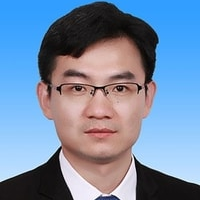Innovative Strategies for Solid Waste Minimisation in the Mining and Minerals Industry
A special issue of Minerals (ISSN 2075-163X). This special issue belongs to the section "Environmental Mineralogy and Biogeochemistry".
Deadline for manuscript submissions: closed (26 July 2021) | Viewed by 22625
Special Issue Editors
Interests: solid waste minimisation; cemented paste backfill; pollution reduction; recycling; first-principles calculations; molecular dynamics; artificial intelligence
Special Issues, Collections and Topics in MDPI journals
Interests: rock mechanics; reuse of solid waste materials; roadway surrounding rock control; grouting reinforcement; underground space development
Interests: rock mechanics; rock excavatability; numerical modelling; rock material and mass characterisation and classification; DAQ systems and modelling and optimisation in mining engineering structure design and other applications
Interests: groundwater friendly backfilling; comprehensive utilization of solid waste from mining, dressing and smelting
Special Issues, Collections and Topics in MDPI journals
Interests: data analysis using AI and ML; recycling; engineering materials; numerical modeling; simulation
Special Issues, Collections and Topics in MDPI journals
Special Issue Information
Dear Colleagues,
The evolution of the mining and minerals industry has been accompanied by a substantial increase in the amount of solid waste (i.e., mine tailings, coal gangue, coal fly ash, slag). The solid waste can come from numerous sources, from the exploration of prospective sites to the refining of minerals. Due to its high potential to cause widespread environmental damage, the treatment of solid waste has been one of the most daunting problems encountered by the mining and minerals industry.
Conventional methods of solid waste treatment, such as direct surface disposal, have many shortcomings that limit their wide application. These shortcomings include, but are not limited to, failure risk of the storage facility, occupation of land resources, potential heavy metal contamination, etc. Therefore, innovative strategies are needed for solid waste minimisation in the mining and minerals industry. Research has been carried out to improve the overall strategies of solid waste minimisation in different aspects. Some studies propose the minimisation method during the generation of solid waste, while others intend to design new means of solid waste recycling.
The purpose of this Special Issue is to bring together important works that have been carried out in the field of solid waste minimisation in the mining and minerals industry. The key areas that have been concentrated on include, but are not limited to, the following:
- Fundamental studies on solid waste generation;
- Advanced minimisation strategies during waste generation;
- Innovative recovery and removal techniques for heavy metals in solid waste;
- Fundamental studies on solid waste utilisation;
- Co-recycling of solid waste from various sources;
- Artificial intelligent-aided methods in solid waste minimisation;
- Other improvements to conventional solid waste strategies.
Prof. Dr. Chongchong Qi
Prof. Dr. Guichen Li
Prof. Dr. Hakan Basarir
Prof. Dr. Qiusong Chen
Dr. Yuantian Sun
Guest Editors
Manuscript Submission Information
Manuscripts should be submitted online at www.mdpi.com by registering and logging in to this website. Once you are registered, click here to go to the submission form. Manuscripts can be submitted until the deadline. All submissions that pass pre-check are peer-reviewed. Accepted papers will be published continuously in the journal (as soon as accepted) and will be listed together on the special issue website. Research articles, review articles as well as short communications are invited. For planned papers, a title and short abstract (about 100 words) can be sent to the Editorial Office for announcement on this website.
Submitted manuscripts should not have been published previously, nor be under consideration for publication elsewhere (except conference proceedings papers). All manuscripts are thoroughly refereed through a single-blind peer-review process. A guide for authors and other relevant information for submission of manuscripts is available on the Instructions for Authors page. Minerals is an international peer-reviewed open access monthly journal published by MDPI.
Please visit the Instructions for Authors page before submitting a manuscript. The Article Processing Charge (APC) for publication in this open access journal is 2400 CHF (Swiss Francs). Submitted papers should be well formatted and use good English. Authors may use MDPI's English editing service prior to publication or during author revisions.
Keywords
- sustainability
- solid waste minimisation
- waste generations
- tailings management
- waste disposal
- heavy metals
- utilisation
- co-recycling
- artificial intelligence









